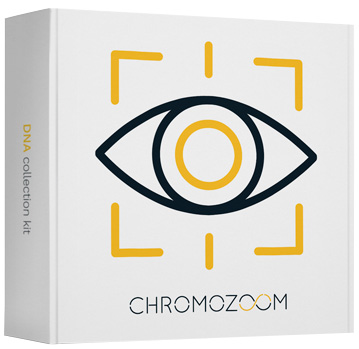Age-related macular degeneration (AMD)
Age-related macular degeneration (AMD) is the most frequent cause of blindness in people over 50 years old. Its prevalence increases with age. Currently, the number of people affected worldwide is estimated at 170 million, and it is assumed that this number will increase to 288 million by 2040.AMD is a multifactorial disease in which the following factors are involved:
• Genetic factors (the presence of genetic variants associated with the development of the disease in the genome)
• External environmental factors (such as smoking or frequent exposure to UV radiation or blue light)
• Physiological condition of the individual (hypertension or high cholesterol level for example).
The risk of disease formation can be predicted by discovering the presence of potential disease-causing genes involved in the development of AMD, and its onset may be delayed or prevented through early detection.
Caroteniods and their function in the eye
AMD is a medical condition caused by degenerative changes in the central area of the retina, the so-called yellow spot (macula lutea). This part of the eye contains the largest number of sensory photoreceptor cells (rods and cones), and is responsible for the sharpest vision. The yellow colouration of the macula lutea is caused by a high concentration of carotenoids, which act as a natural protective layer of the retina. They filter blue light, and help protect against its harmful effects. These days, our eyes are constantly exposed to blue light due to the extensive use of modern technologies with digital screens, in addition to daily exposure to solar radiation and LED lighting, all of which can increase the risk of retinal damage. As our bodies are not able to produce carotenoids themselves, we have to get our supply of them through food and supplementation. Unfortunately, the nutritional value of caretenoids decreases as we age, which can lead to insufficient caretenoid levels in the eye, leaving them unprotected and vulnerable. This imbalance leads to pathological changes in the area of the macula, which can manifest in two different forms of age-related macular degeneration: wet and dry.Dry AMD
The dry form, which represents 80 - 90 % of cases, is manifested by a gradual thinning of the retina, the death of photoreceptor cells, and the formation of pathological structures leading to severe vision impairment and blindness. It is characterised by the presence of drusen in the Bruch membrane, a result of the accumulation/build up of certain metabolic waste products. Gradually, retinal pigment epithelial (RPE) cell death occurs, membrane permeability decreases, and sensory cell segments are damaged. The final stage in this degeneration is geographic atrophy of the macula lutea.
In the case of dry form, the course of the disease is slow, and there is not yet any available therapy that would eliminate the symptoms of advanced AMD. For this reason, increased intake of substances beneficial to eye health, in the form of a diet designed to delay early stages of the disease, is recommended.
Wet AMD
The wet form of AMD leads to the pathological formation of fragile blood vessels under the retina (choroidal neovascularization - CNV). These may bleed, or the fluid may leak from them causing retinal hypoxia, image deformation, a decrease in visual acuity, and blindness. The abnormal growth of fragile new blood vessels is caused by the excessive effects of vascular endothelial growth factor VEGF. So the anti- VEGF antibody therapy, which reduces VEGF, is used for the wet form treatment, and it is administered by intraocular injections. Another option is laser treatment, depending on the extent of retinal impairment. If the wet form of macular degeneration is diagnosed early and treated appropriately, AMD does not lead to an entire loss of sight.